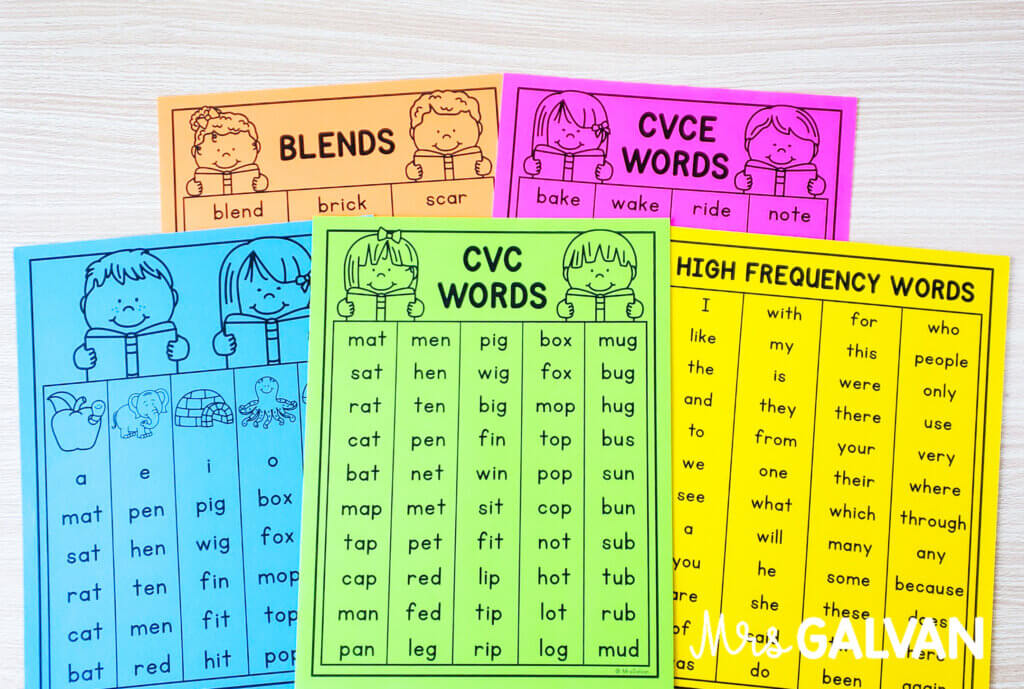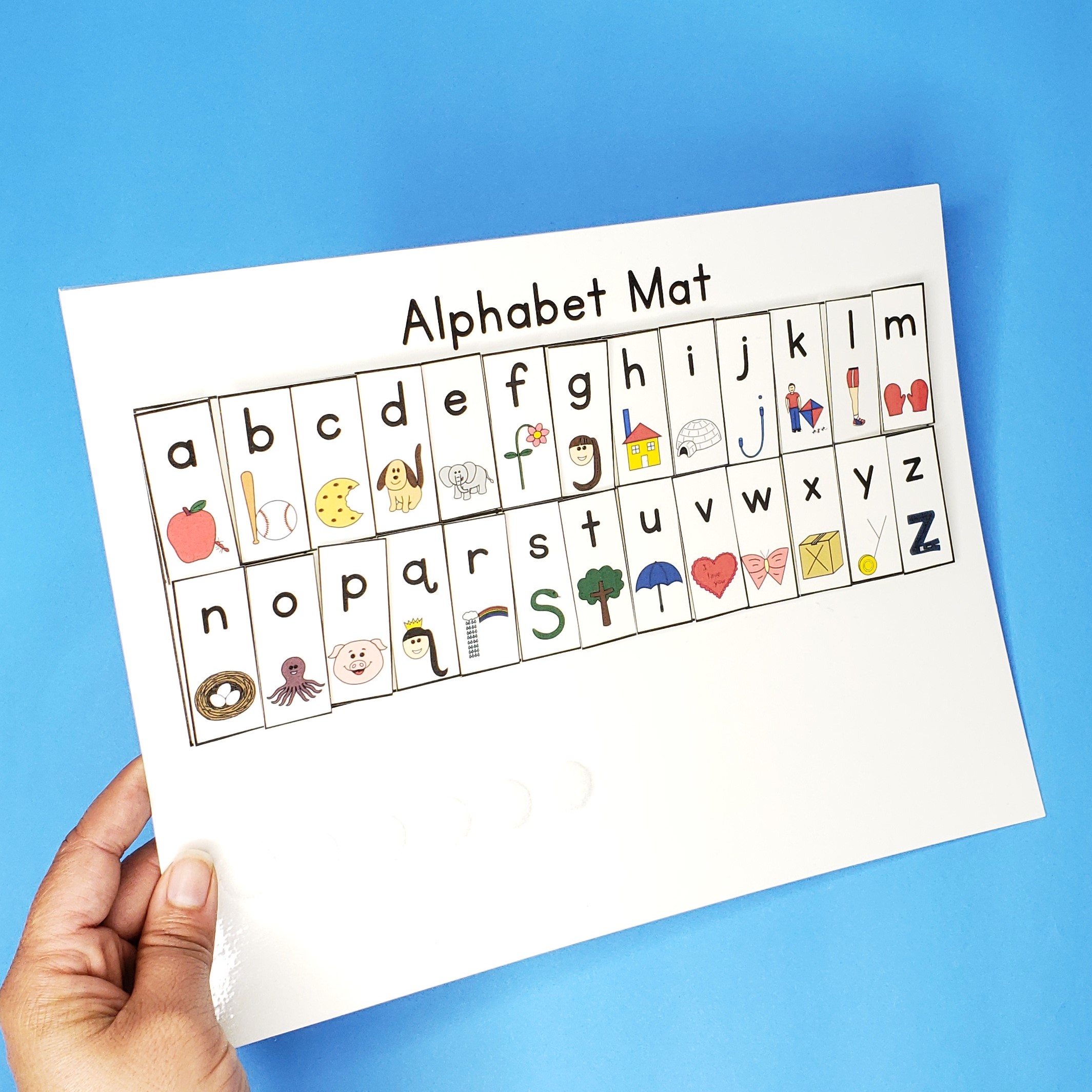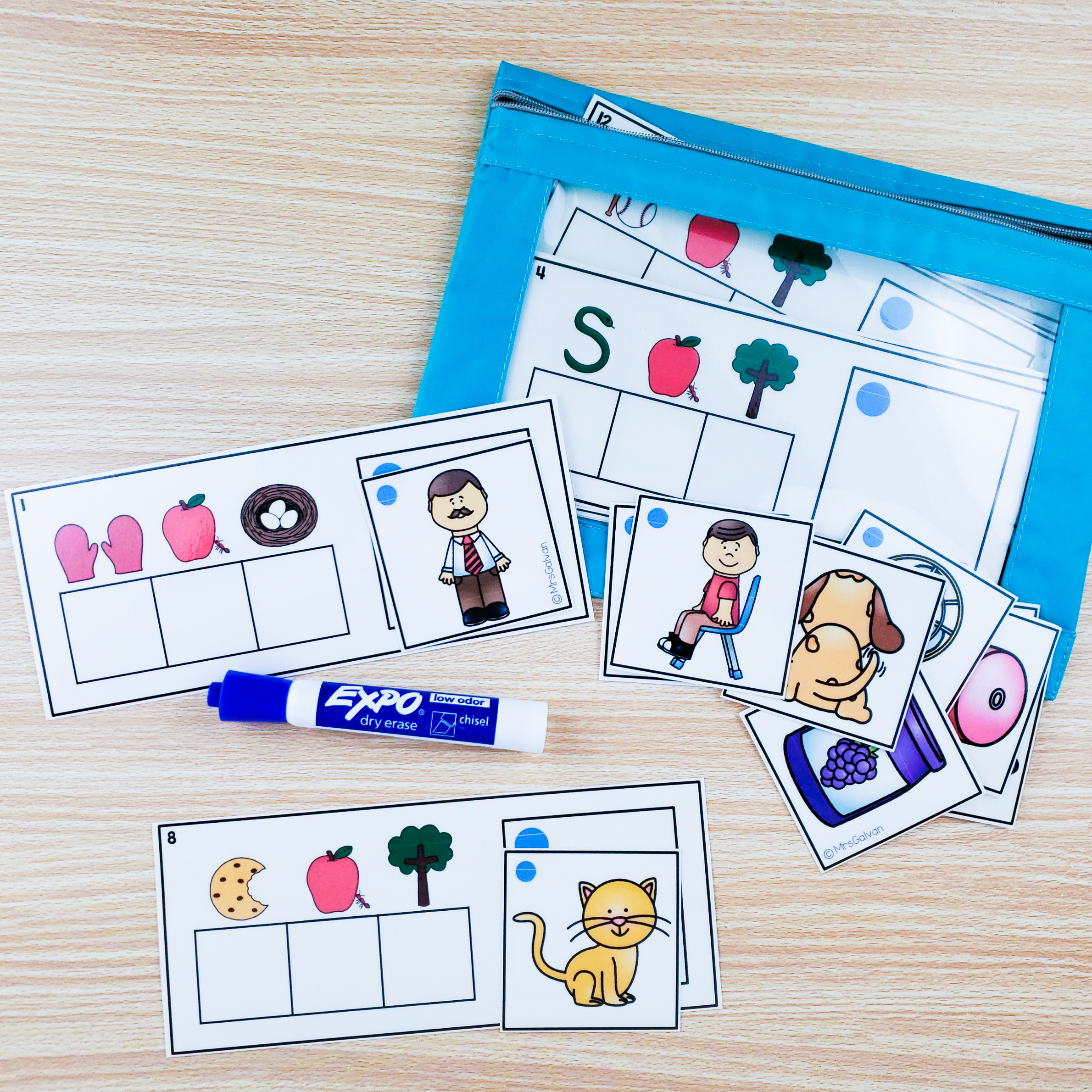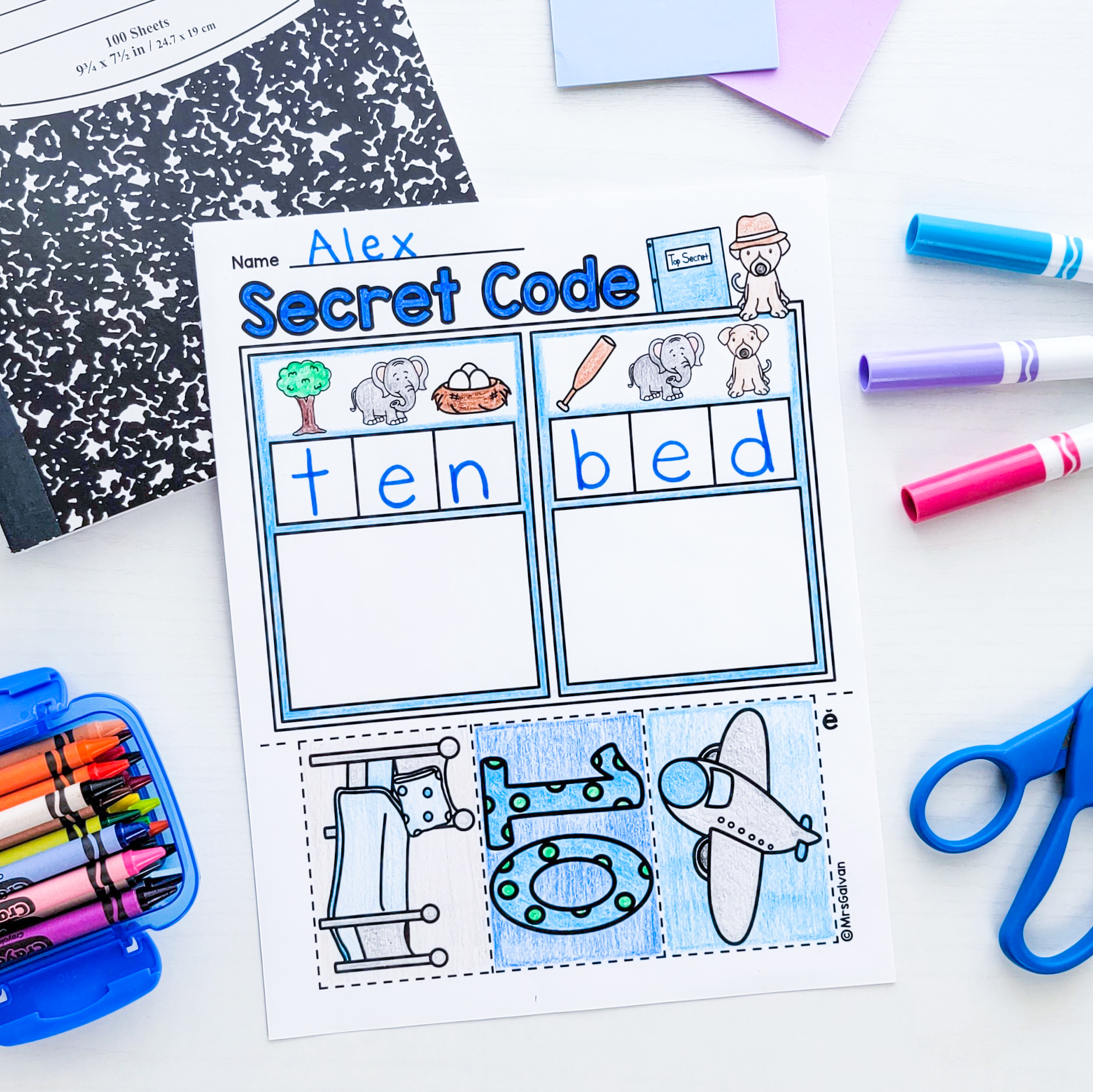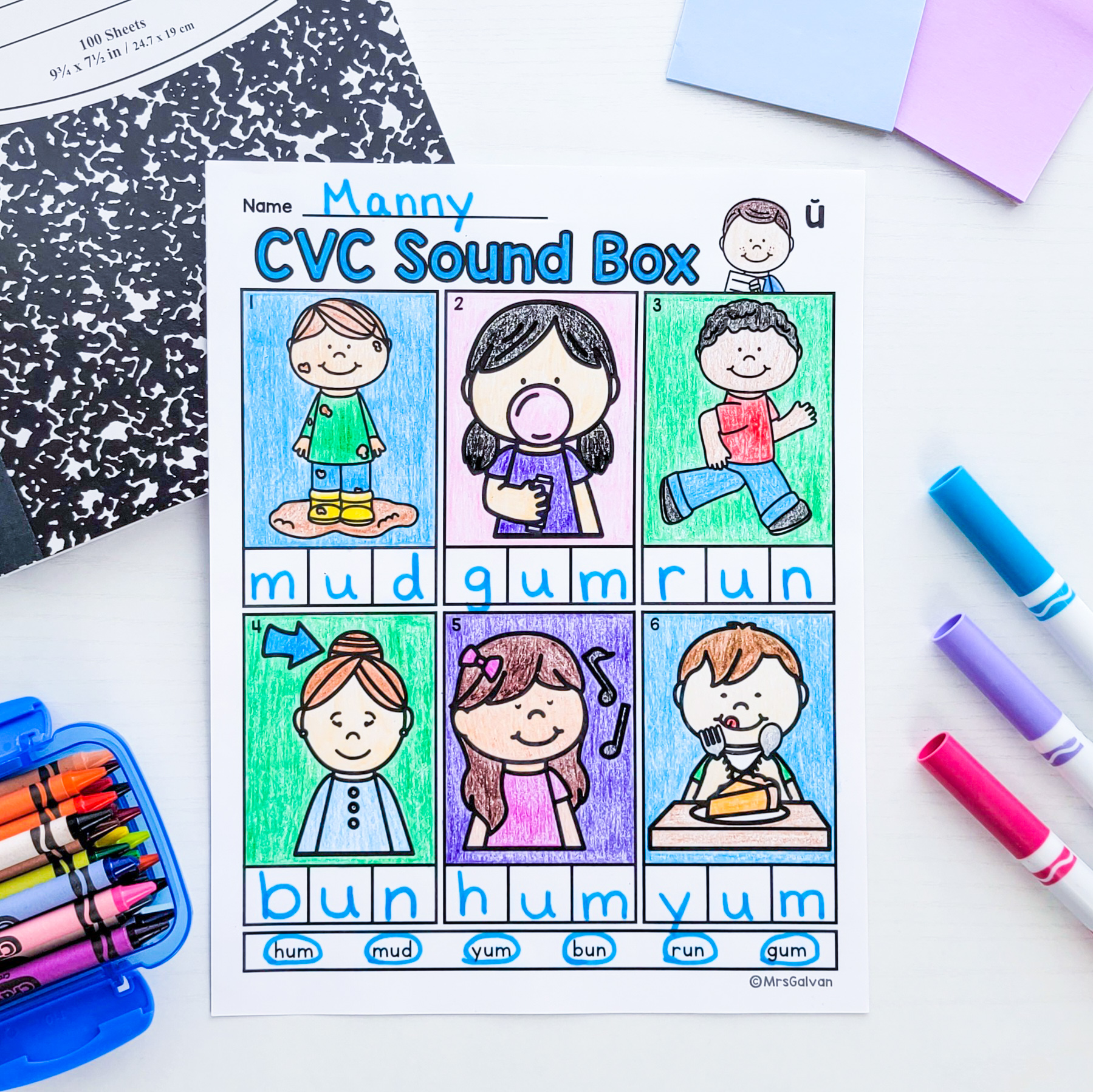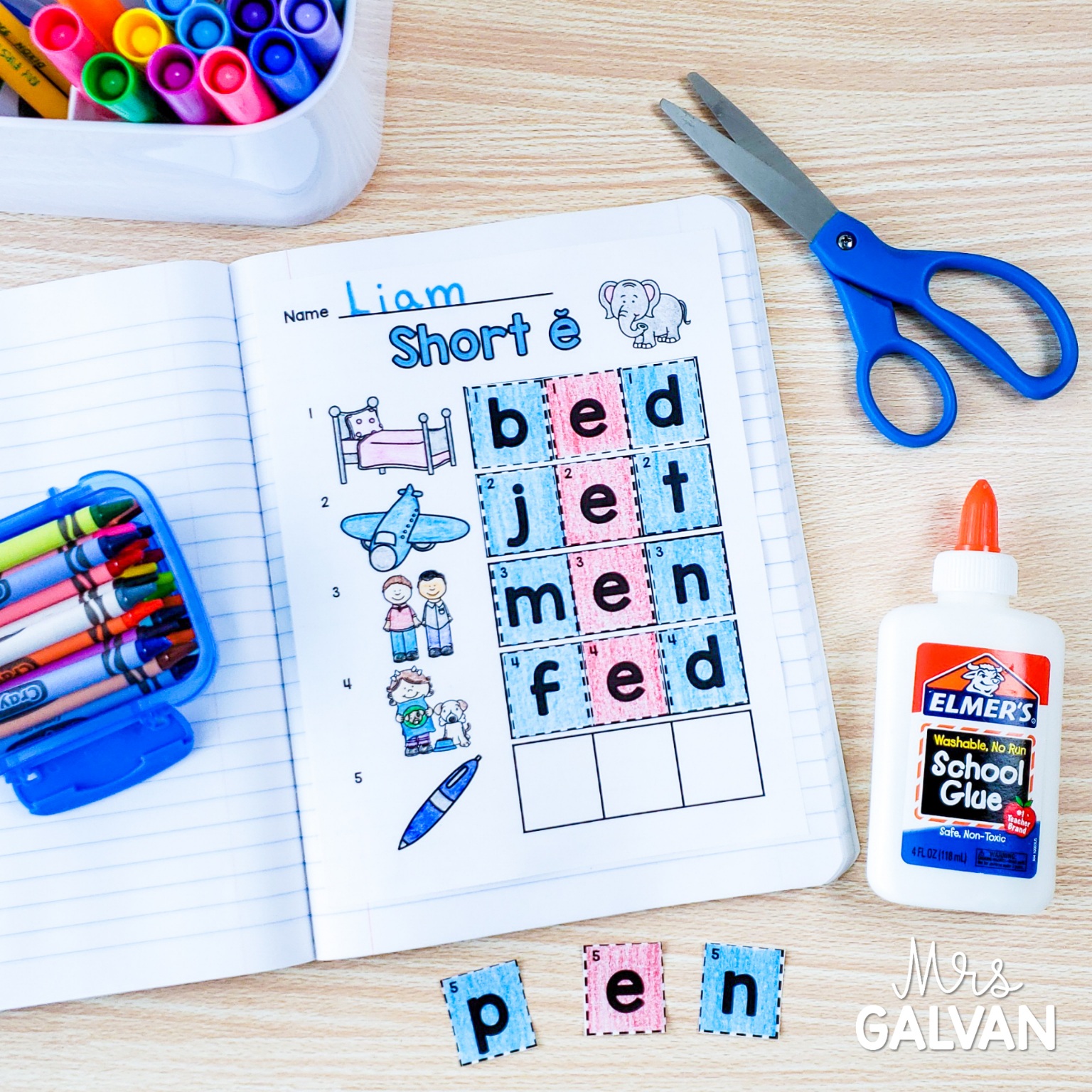
READ with SUPPORT
Visuals Integrated Picture Mnemonics
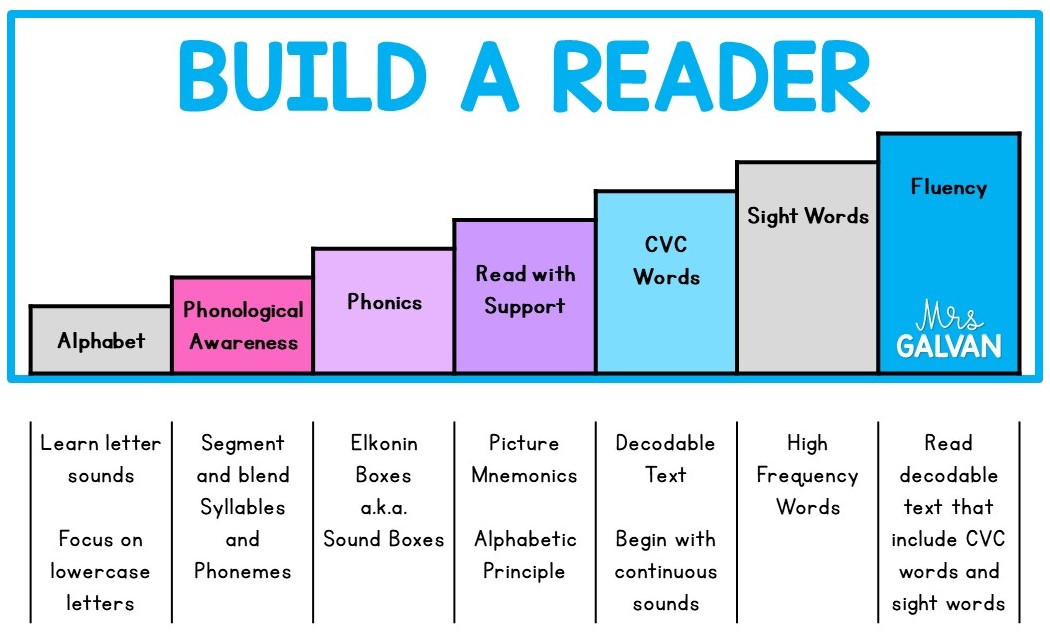
Let’s begin with the end in mind. Our goal is to build a reader quickly and efficiently!
STEP 1 ALPHABET Learn letter sounds
STEP 3 PHONICS with Sound Boxes
There are many components of reading. The main five are Phonological Awareness, Phonics, Fluency, Vocabulary, and Comprehension. For the purposes of this post, we will be focusing on Reading with Support which is like learning to read with training wheels.
STEP 4 READ with SUPPORT.
Although I believe that learning letter sounds and learning to blend phonemes are important pre-reading activities, it is reading with visual support that is the real secret sauce. This is usually the missing component that supports students with connecting sounds to letters while decoding. This is the method that I have used to teach my Kindergarten students how to read. I have also used it in 1st grade to teach special education students how to read. Finally, I have used this method to teach adults that were in special education and have graduated high school how to read.
In step three of building a reader we used Elkonin Boxes a.k.a Sound Boxes.
This activity is explained on page 3 of the the TPRI’s Newsletter “A Focus on Phonemic Awareness ” written by tpri.org. We will use the same boxes and counters as before.
Model the activity. Say, “Listen as I segment the word man. I will move a counter for each sound I say. /m/ /a/ /n/. The first sound I heard was /m/. I am going to write the spelling for that sound in the first box, m. The next sound I hear in the word is /a/. /a/ is spelled with the letter a. Watch as I write the letter a in the second box. The last sound I hear is /n/. /n/ is spelled with the letter n. Watch as I write the letter n in the third box.
Many teachers implement a similar spelling strategy without sound boxes called the Alphabet Arch that was developed by the Florida Center for Reading Research. You can find the Alphabet Arch activity here. Technically, the alphabet arch is a scientifically research based strategy, but let me explain some of the reasons I think it falls short. The alphabet arch is typically used with capital letters. We’ve already discussed how these are not as common as lowercase letters while reading. Another thing the alphabet arch lacks is visual support. If a child cannot remember what sound the letter makes, there is no support.
Don’t get me wrong, Sound Boxes are a great strategy, but I have improved it drastically by using an Alphabet Mat with movable pieces as a sort of “hands on type writer” that includes visual support for each sound.
The Alphabet Mat is, in my opinion, the best idea I’ve ever had. I just don’t think people know how great it is or understand how to use it. I will try my best to explain it.
The Alphabet Mat is basically a laminated sheet of cardstock with a table that has all of the letters of the alphabet written in uppercase letters. The second page is the same sized table with lowercase letters on top and a visual for the letter with the same initial sound beneath it. The second page is also laminated and the rectangles are cut out. These rectangles are attached with velcro dots to the first page. Finally, attach four to six velcro dots in a row on the bottom left of the mat.
Once your mat is ready we can begin working on hands on spelling activities. We will continue segmenting words into phonemes and pulling something down for each sound.
Begin by modeling as before. Listen as I “cut” the word man. I will count each sound with my fingers. /m/ /a/ /n/. There are three sounds in the word man. The first sound was /m/. What letter makes the /m/ sound? Students may respond with m. If they do not remember, they can look at the picture clues on the Alphabet Mat and will eventually say /m/ like in mittens. /m/ /a/ /n/
The second sound was /a/. What letter makes the /a/ sound? Students may respond with a. If they do not know what letter makes the /a/ sound they can again look at the Alphabet Mat and will eventually say /a/ like in apple. /m/ /a/ /n/
The third and final sound is /n/. What letter makes the /n/ sound? Students may respond with n. If they do not know what letter makes the /n/ sound they can once again look at the Alphabet Mat and will eventually say /n/ like in nest.
In each of these instances students have an opportunity to figure out which letter makes the sound by using the picture clues, instead of feeling like they don’t know.
The Sound Box Spelling Puzzles are a fun activity I developed after learning about Elkonin Boxes. Students look at the picture above the boxes and write the letter that makes that initial sound in the box with a dry erase marker. Once they blend the sounds together they will have the secret word. Students will then find the picture that matches the secret word. These have been updated to a new ink saving design.
I also use Sound Boxes to do Daily Dictation, which is similar to a “Spelling Test with Teacher Support”. The teacher calls out a word, uses it in a sentence, and repeats the word like all spelling tests, but then I help orally segment it and students have these sound boxes for support.
Students make boxes on their own paper, but I have this as an example of where to write the title, how to skip lines, and draw sound boxes.
I have also incorporated many Sound Box Spelling pages into the CVC Words Worksheets with Cut and Paste. They fit into a composition notebook with just one cut, and implementing them is as easy as print and go.
A simple tip for teaching Reading with Visual Support is to provide an Alphabet page that students can refer to if they forget a sound. Read with children allowing them to read all of the words they can and being there to help read words or give clues when they need support.
I also like to use the Leapfrog Talking Words Factory DVD . It does use capital letters instead of lowercase ones, but other than that, I love it.
Goal : Build a reader quickly and efficiently!
Let’s build more little readers! Pin to remember or share on Facebook!
-MrsGalvan
Pin it!
Share it!
